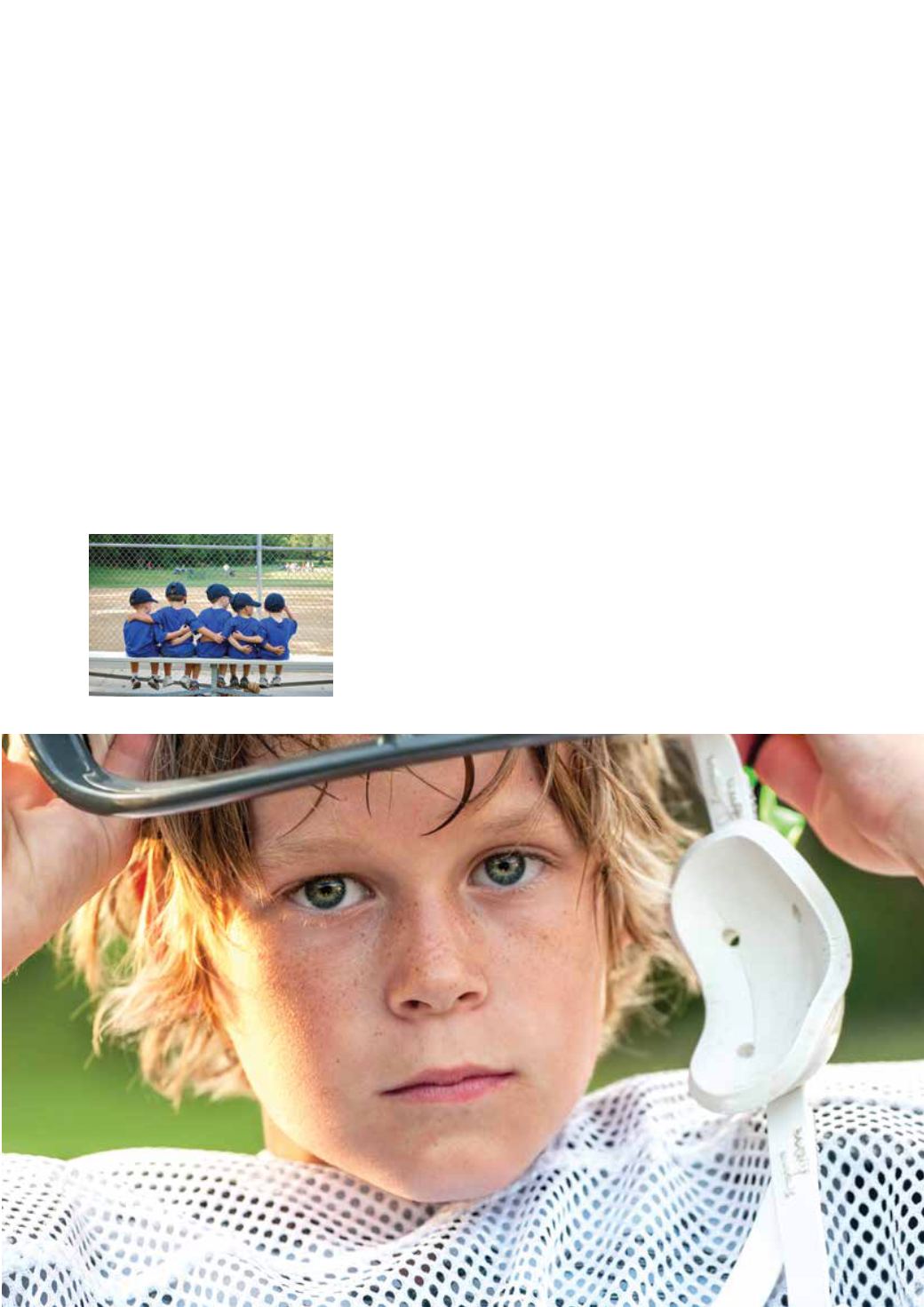
S
ports are a big part of my
identity. I have been involved
in athletics for most of my
life. When I was five years
old, my dad gave me my first ski
lesson in the basement of our home
in Illinois. My brother and I strapped
into skis and trudged around the
carpeted floors, tips pointed out, per
Dad’s instruction. The coordination
and enjoyment I gained from skiing
encouraged me to try other sports.
In middle school, I participated in
competitive gymnastics and trained
for up to 40 hours per week. During
high school, I took up springboard
diving, swimming and water polo.
I later relied on these commitments
to help me stand out in the college
admissions process. My involvement
in athletics has taught me a great
deal about time management,
sportsmanship and perseverance.
And so, as an educator in Hong
Kong, I am sometimes surprised by
the lack of emphasis on athletics here.
Whereas I was actively encouraged to
commit to sports growing up, many
kids don’t receive the same push.
Recently, a nine-year-old student told
me that she was planning to give up
volleyball – which she loves – during
secondary school in order to focus on
her studies.
Hong Kong children are under
a tremendous amount of pressure to
do well at school, and sports cut into
their limited studying time. I know
there have been times in my life when
too much of my focus was directed
towards sports. But, in discouraging
athletics, are we doing students a
favour or a disservice?
Go play
In order to have the best shot at
a bright future, children should
exercise their minds as well as their
bodies. Yet, given the academically
rigorous culture of Hong Kong, it
is unfortunate and unsurprising
that physical activity takes a back
burner in many kids’ lives. A recent
study conducted by the Advisory
Committee for the Physical Fitness
Test for the Community found that
only 50 per cent of children and 40
per cent of adolescents in Hong Kong
are considered adequately “active”.
And researchers at the University of
South Australia found that a decline
in physical fitness is twice as severe
in Asian children when compared to
their Western peers.
In other words, it is becoming
increasingly clear that children are
not spending enough time moving
their bodies. One way to reverse
this trend and prevent children from
falling into the growing population
of “inactive” youth is by helping
them develop a passion for sport and
encouraging their progress. This will,
in turn, make kids less susceptible
to obesity, chronic illnesses such as
cardiovascular disease and diabetes,
and other health problems. While it
is wise to consider the ways in which
any activity might interfere with
kids’ schooling, it is also important
to consider the reality that sport
can help children avoid very serious
health problems.


